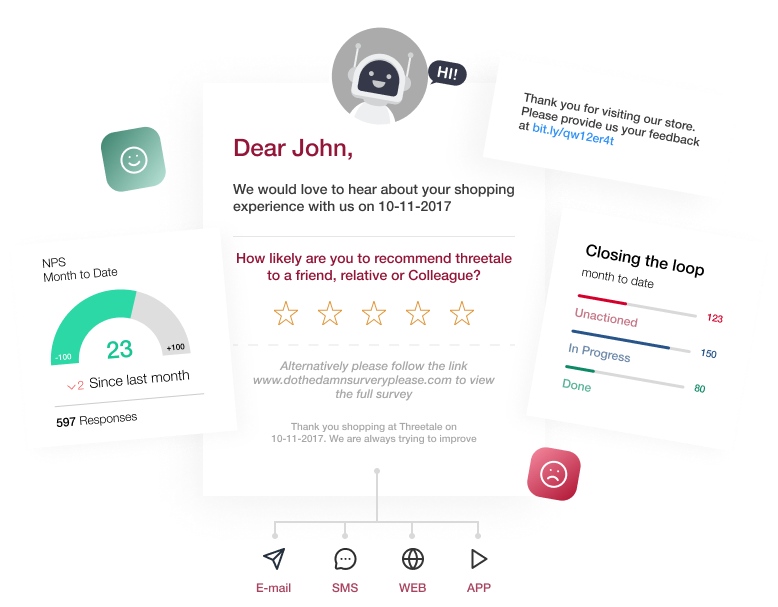TLDR:
- Customer journey touchpoints are the various interactions a customer has with a brand, spanning from initial awareness to post-purchase engagement. Identifying and understanding these touchpoints is crucial for mapping the customer experience.
- These touchpoints can occur across multiple channels, both online and offline, including websites, social media, customer service interactions, and physical store visits. Each touchpoint plays a role in shaping the customer’s overall perception of the brand.
- Analyzing and optimizing these touchpoints allows businesses to create a seamless and consistent customer experience, leading to increased satisfaction and loyalty. Effective management of touchpoints is essential for delivering positive customer journeys.
Introduction: Customer Journey Touchpoints
A customer journey touchpoint refers to any instance in which a customer interacts with your business, either directly or indirectly. These interactions can occur before, during, or after a purchase, and they extend across a wide range of channels, including social media, physical stores, and customer support.
Each touchpoint presents an opportunity to either reinforce a positive experience or create friction that may drive customers away. Understanding and optimising these touchpoints is essential for keeping your customers happy and loyal to your business over the long term.
We at Resonate CX offer industry-leading customer experience management (CXM) solutions that can help you manage and fine-tune every touchpoint along the customer journey. We’re also happy to offer you expert advice on how to create a smooth and frictionless experience for your customers, wherever they might encounter your brand. Let’s now have a closer look at the concept of customer journey touchpoints and explore why they’re crucial to business success.
The Importance of Understanding Customer Touchpoints in Modern Business
Customer experience has become a key differentiator for businesses today. While having high-quality products or services is essential, customers are increasingly looking for more—namely a seamless and positive experience from start to finish.
This is the primary reason it’s so important to understand customer journey touchpoints. Each opportunity for interaction, from the first ad they see to their post-purchase conversations with your support team, contributes to how a customer perceives your business. A smooth, well-thought-out customer journey can convert a one-time buyer into a loyal advocate for your brand.

Moreover, mapping and analysing these touchpoints enables your business to identify where things may be going wrong. For instance, a poorly designed checkout process or a slow customer service response can cause friction, leading customers to abandon their purchase or look for alternatives elsewhere. Pay close attention to these pain points and you can address issues before they impact customer retention or brand reputation.
Technological solutions that help businesses track and improve customer experience are continually being rolled out, and these technologies can offer a significant competitive advantage to organisations that invest in them.
At Resonate CX, our aim is to streamline the entire process of analysing customer feedback data, affording you the tools and insights optimise key touchpoints across the customer journey. With a cutting-edge CXM solution in your corner, you should have no trouble forging strong, lasting relationships with your customers that will keep you ahead of the curve for years to come.
The Different Customer Journey Touchpoints
Pre-Purchase Touchpoints
The pre-purchase stage includes all the interactions a customer has with your brand before making a purchase. These touchpoints include social media engagement, browsing your physical store, website visits, trying a sample or doing a walkthrough or discovery trips. The goal during this phase is to capture the customer’s attention and build trust. If a potential customer is impressed with your messaging, branding, and user experience, they’re more likely to move forward in the journey. Make sure that your pre-purchase presence is strong, clear, and accessible at this stage, as customers often form their first impressions here.
Purchase Touchpoints
Once a customer decides to make a purchase, the touchpoints shift to the purchasing process itself. For instance, you might consider their checkout experience, interactions with sales staff (whether online or in-store), your online shopping cart as purchase touchpoints and so on. These are particularly important because they can either reinforce a customer’s decision to buy or cause friction that leads to cart abandonment. If you can provide a smooth and intuitive purchasing experience, then chances are the customer will complete the transaction and leave with a positive impression of your brand.
Post-Purchase Touchpoints
The customer journey doesn’t end once a customer buys your product. Post-purchase touchpoints are key to building long-term relationships and loyalty. These interactions include product delivery, follow-up emails, customer service inquiries, and the process for handling returns or exchanges. Positive post-purchase experiences can turn a first-time buyer into a repeat customer, while poor experiences—such as delayed shipping or unhelpful customer service—can deter future business. Focus on excellent post-purchase support to encourage ongoing engagement and turn your buyers into advocates.
How to Track and Improve Customer Journey Touchpoints
Use Tech Tools to Map the Customer Journey
A clear understanding of the entire customer journey is the first step towards optimisation. Technological tools enable businesses to track where and how customers interact with them—whether it’s through a website, social media, or in-store. Mapping these touchpoints enables you to identify key areas of engagement and potential friction.
Gather Feedback Across Multiple Touchpoints
It’s in your company’s best interest to collect feedback from various customer touchpoints for insight into different stages of the journey. This data will make it easier for you to understand customer preferences and identify opportunities for improvement. One of the most tried-and-tested ways to capture this feedback is by soliciting it directly through surveys, which you might send to your customers or make available to them with the help of a CXM platform.
Platforms like Resonate CX don’t just collect feedback for you, either; the system will also work with you to interpret that feedback data and extract insights that are useful to and actionable for your organisation. Voice of the Customer (VoC) solutions, in particular, are ideal for this purpose. Our VoC platform uses AI to analyse feedback in real time. Beyond gathering data, we’ll assist your business in understanding the sentiment behind it, which can facilitate more informed decision-making.
Identify Pain Points and Friction Areas
Once your business has collected feedback data, you should focus on identifying areas where customers may experience frustration or difficulty. This could be anything from a confusing checkout process to slow response times from customer support. Address these pain points promptly to improve the overall customer experience and smooth out the journey.

To do this effectively, it’s useful to think in terms of the inner and outer loops of customer experience management. The inner loop of CXM refers to the immediate interactions between customers and a business. These can involve identifying friction points that can be resolved in the short term, often by frontline teams. For example, a customer might report through an after-sales survey that they’ve received a damaged product. Your business can address this issue immediately through a phone call with the affected customer. You can offer an apology and then take the necessary action to resolve the situation, such as by arranging for a replacement item or providing a refund. The resolution is prompt and addresses the customer’s immediate concern.
In contrast to this, the outer loop of customer experience management typically involves more strategic, long-term actions by your organisation. This may involve identifying broader trends and systemic issues across customer journeys, which may require gathering and analysing feedback data over time to make more substantial changes to your business operations, policies, or product and service quality.
Monitor the Impact of Changes
After implementing changes, your business should then focus on monitoring their impact on customer satisfaction. Tools like customer satisfaction surveys, net promoter scores (NPS) questionnaires, and conversion data can help you gauge whether adjustments have had the desired effect.
Remember that optimising the outer loop of CXM goes beyond just collecting these data; it requires you to track these metrics continuously to ensure that the experiences you afford your customers evolve with changing preferences. This ongoing evaluation allows you to fine-tune your strategies, making necessary adjustments so that your business can stay aligned with customer demands and maintain a high level of satisfaction over time.
Conclusion
At the end of the day, whatever industry your business operates in, your efforts to make the most of each touchpoint will pay off in the form of lasting customer relationships and sustained business growth. Resonate CX is here to help you deliver a positive and memorable experience that your customers will gladly return to over time. Don’t hesitate to get in touch with us today if you’d like to learn how our industry-leading platform can enhance your every customer interaction.







